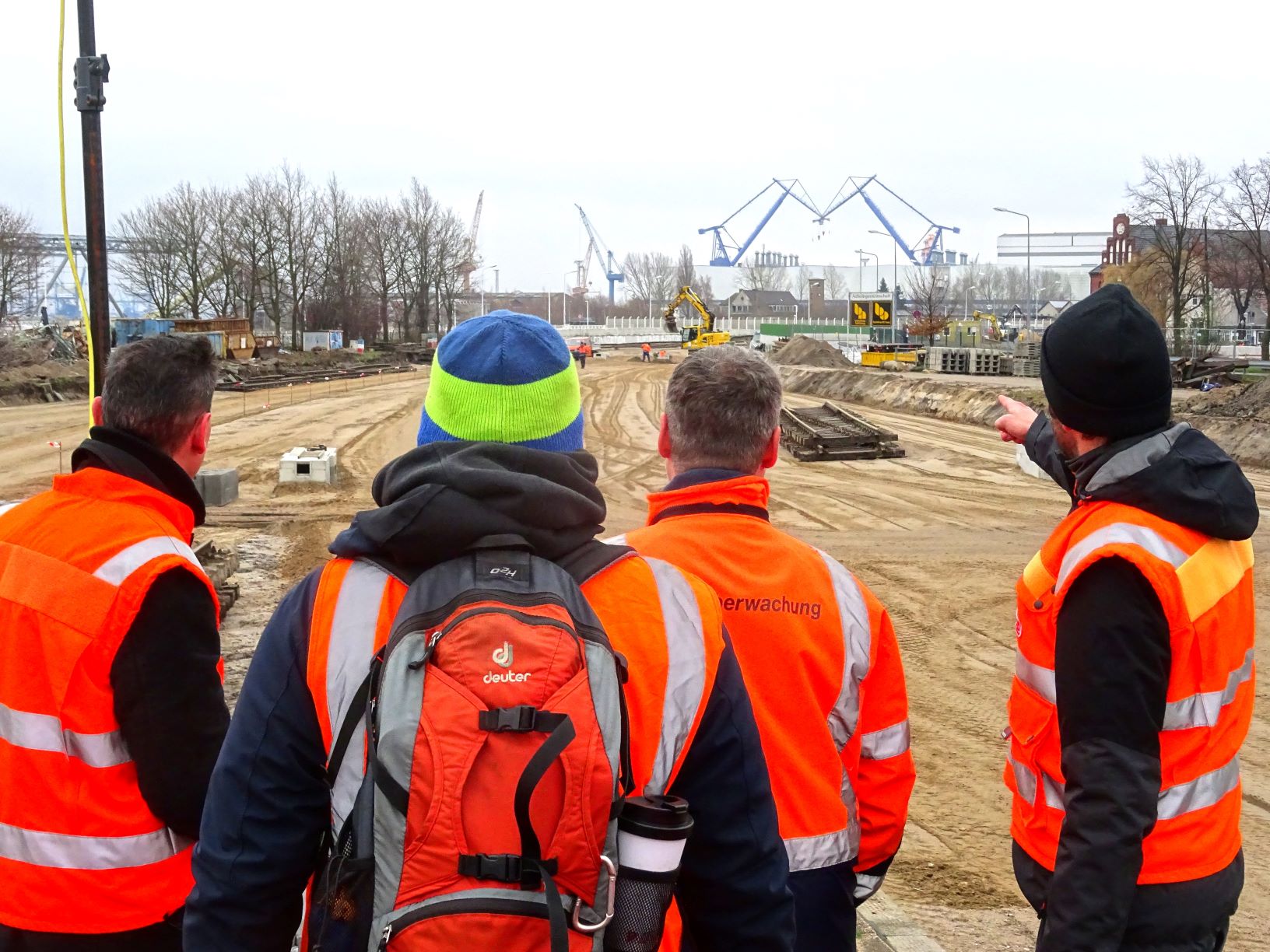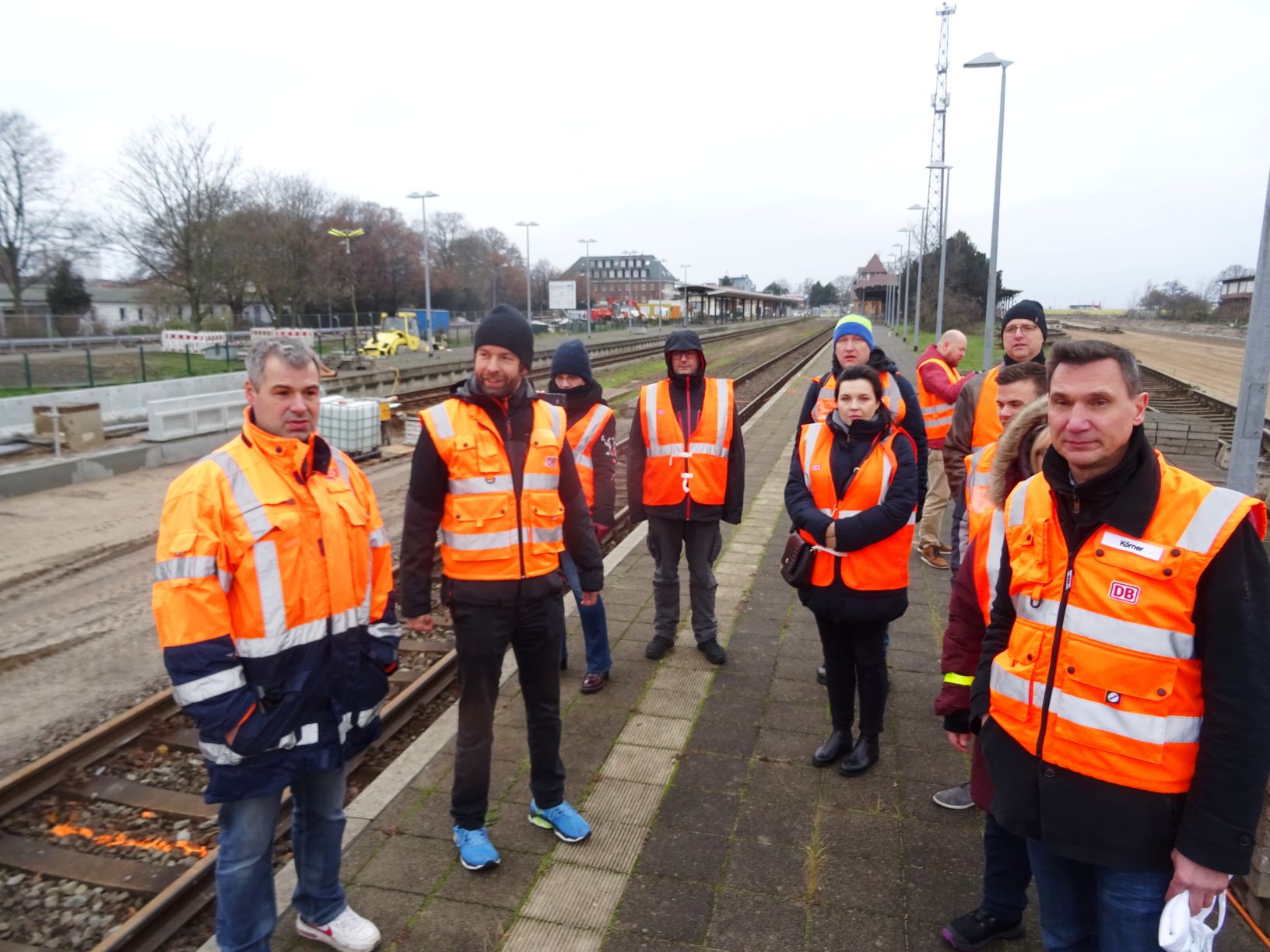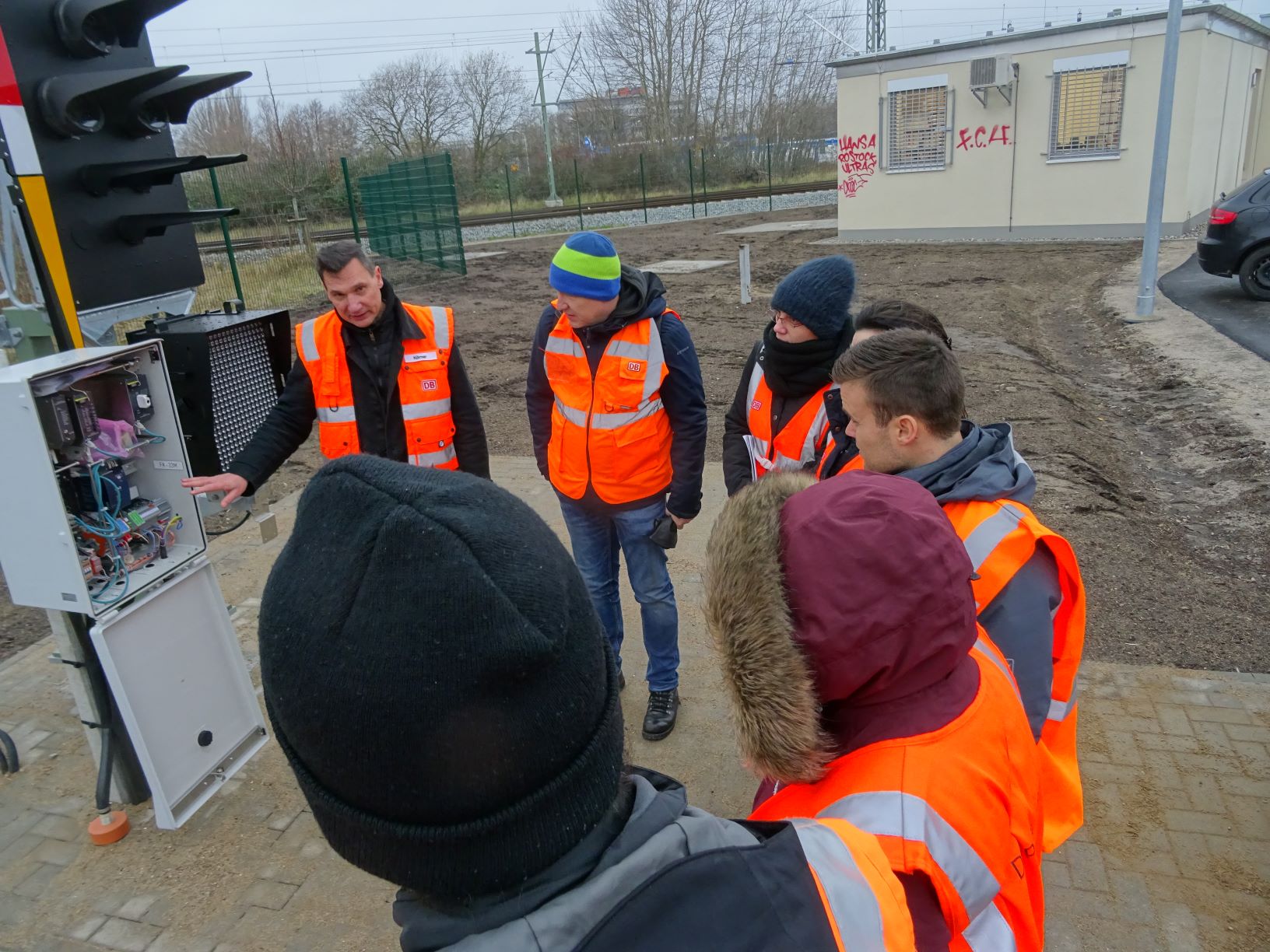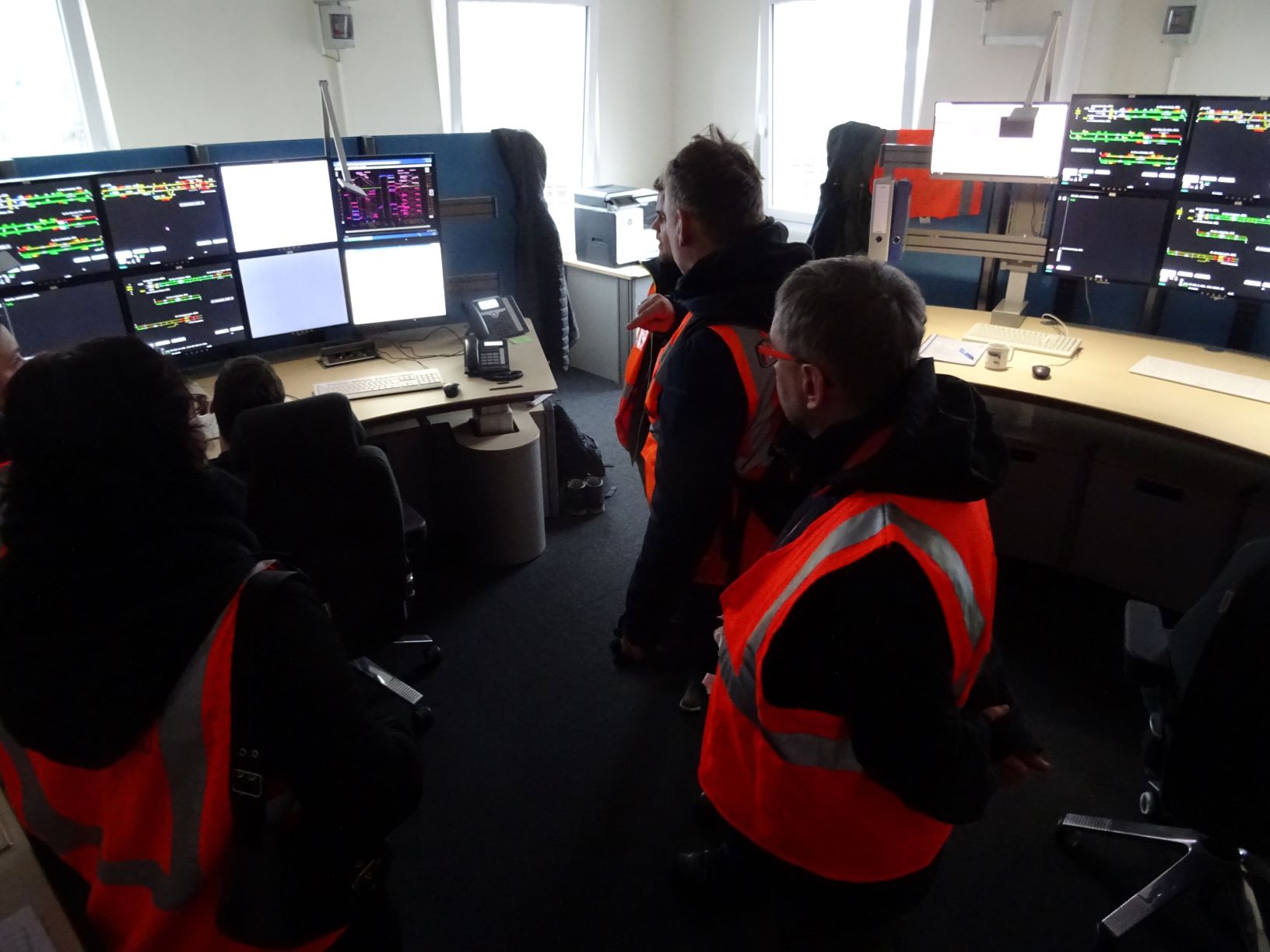Partnership meeting in Rostock, Germany
By Svetlana Sukhova
23 participants from partner regions in Germany, Sweden, Denmark, Poland, Lithuania and Estonia attended the INTERCONNECT partnership meeting, which took place on 5th of December 2019, in Rostock, Germany in the main building of the city of Rostock administration.
Key note speech by Dr./Ing.Carsten Schurmann about Cross-border public services (CPS) in transport based on the lessons learnt from ESPON CPS project, kept the audience attentive and interested:
The improvement of international transport connections in the southern Baltic Sea region is the core objective of the INTERCONNECT project. At the moment, there are only few cross-border public transport services operating in that area, especially as the Baltic Sea represents a major barrier. Another particular challenge is how different actors from the participating countries can best collaborate and how they can jointly plan and implement better transport services. Cross-border public services could be an important instrument to reach this objective. At the INTERCONNECT partner meeting in Rostock on 5 December 2019, Carsten Schürmann (TCP International, Stuttgart, This email address is being protected from spambots. You need JavaScript enabled to view it.) gave a key note speech on CPS in transport, presenting main findings and lessons learnt from the ESPON CPS project (https://www.espon.eu/cps). Currently, CPS in transport account for more than 18% of all CPS in Europe (only topped by CPS in environmental protection and CPS in civil protection and disaster management, with shares of about 20% each). Within the transport sector, 45% are bus services, followed by train services (27%), CPS in ticketing, tariffs and management of public transport (13%) and ferry services (11%).
CPS are of particular importance for border regions, because they:
- address a shared problem or development opportunity,
- include actors from both sides of the border (joint commitment),
- have target groups on both sides of the border and are non-discriminatory to access,
- are publicly organized and delivered either directly or via a concession,
- are publicly financed, and
- establish tangible services that are visible to the public.
CPS, furthermore, enhance functionality of border areas by:
- contributing to reducing negative border effects,
- contributing to better connections and supporting cross-border flows of people,
- creating functional areas
- contributing to raise awareness of cross-border possibilities in various policy fields (including transport)
- addressing gaps in (domestic) service provision or offering specialized services
- making service provision less costly and raise its efficiency, thereby helping to maintain services in border areas with low population densities.
These characteristics of CPS also make the services attractive for INTERCONNECT partners in improving transport services in the southern Baltic Sea region. The key note therefore focused on potential applications of CPS, presented good practice examples from the transport sector, typical legal and financial solutions and problems, and explained crucial issues to consider when developing a CPS.
Brian Gardner, Company Realise, presented the 5.3 report which result, and recommendations could be useful for the future development of the Danish-German Nykøbing-Gedser-Rostock corridor.
After lunch at Steigenberger Hotel restaurant with typical German specialties project partners and consults participated in the workshop. The workshop was arranged by researchers Sven Borén and Henrik Ny at the Sustain Trans team at the department of Strategic Sustainable Development at Blekinge Institute of Technology. The purpose was to retrieve feedback from the project partners on solutions for sustainable x-border and regional public transport. It has been worked out together with the HIE-RO institute in Rostock based on previous findings in the project. The workshop was kicked off with an explanation of the work package and the proposed solutions and how they are complemented by factsheets and a larger list for general solutions for improved public transport. After a recap of strategic sustainable development participants gathered in three language-oriented groups and evaluated the proposed 35 solutions impact on increasing x-border and regional public transport towards sustainability, and then they suggested further solutions. After a short break, the workshop continued with a presentation by BTH of the tailored process models for planning of x-border and regional public transport, and a survey that will be sent out to stakeholders involved in planning for x-border and regional public transport. HIE-RO then presented a conceptual design of a new tool that includes benchmarking of current public transport that would support a current reality analysis and identification of development indicators for further planning of x-border and regional public transport.
The meeting was finalized with a partners agreement on the date and place for the final conference, which will take place in Poland, GDANSK, on the 7th of May, 2020.
On the next day, the 6th of December Innobaltica, Region Blekinge and HIE-RO visited a huge construction project (65 ml Euro) in Warnemünde (railway modernisation with a new digital traffic management). The study visit was arranged by City of Rostock. The presentation was made by Olaf Körner, DB NETZE, project manager.
The Warnemünde train station is located in the north of the Hanseatic city of Rostock and consists of the Warnemünde Werft stop and the Warnemünde passenger station. From the passenger station not only long-distance and regional trains go - in the direct proximity to the station also the ferries to the district "high dune" and cruise ships start. In addition, the "Old Stream" with the city center and the beach of Warnemünde can be reached in a few minutes. However, there is currently no barrier-free transition.
It is therefore planned to dismantle the existing pedestrian underpass and to replace it with a new, barrier-free passage in the northern part of the station. This will enable a comfortable transition between train, city and ship in the future. In addition, two new long-distance platforms (platforms 4 and 5), each with a length of 370 meters, will be built. For the so-called cruise platform (platform 5) there are three direct accesses from the quay.
As part of the project, the track plan in the area of Warnemünde station will also be expanded, with tracks partially adapted in their position and their superstructure renewed. Overhead lines, telecommunications systems and electrical point heaters are also being adapted or newly built.
The existing switchboard signal box at Warnemünde station was replaced by a digital signal box (DSTW). Digital interlocking technology is the latest generation of interlockings and is being rebuilt in Warnemünde as Germany's second DSTW. In DSTWs, the dispatcher transmits the control commands to switches, signals, track contacts or level crossings using digital technology. This eliminates the previously required kilometer-long cable bundles to the individual elements. Due to the existing network connection at the DSTW via data line, signals and switches can also be controlled at significantly greater distances. In the long term, this can reduce the number of signal boxes while maintaining the performance of the rail network.
In addition to the construction project, it is planned to carry out flood protection work in accordance with the requirements of the State Office for Agriculture and Environment Mecklenburg-Western Pomerania, to modernize the traffic station by DB Station & Service and to carry out work on the facilities of DB Energie (among other things to adapt the power supply).









